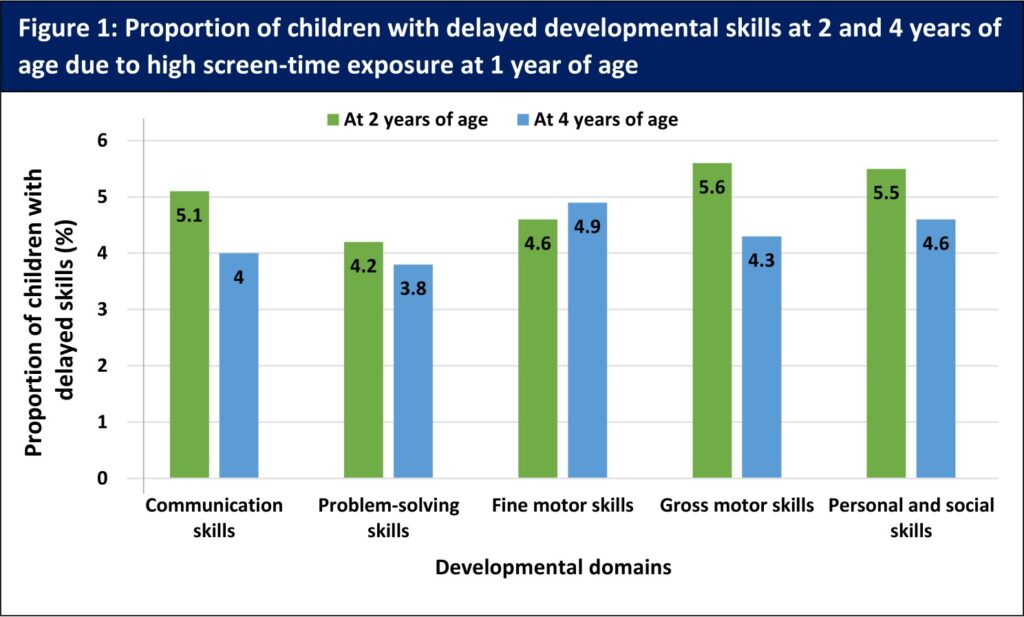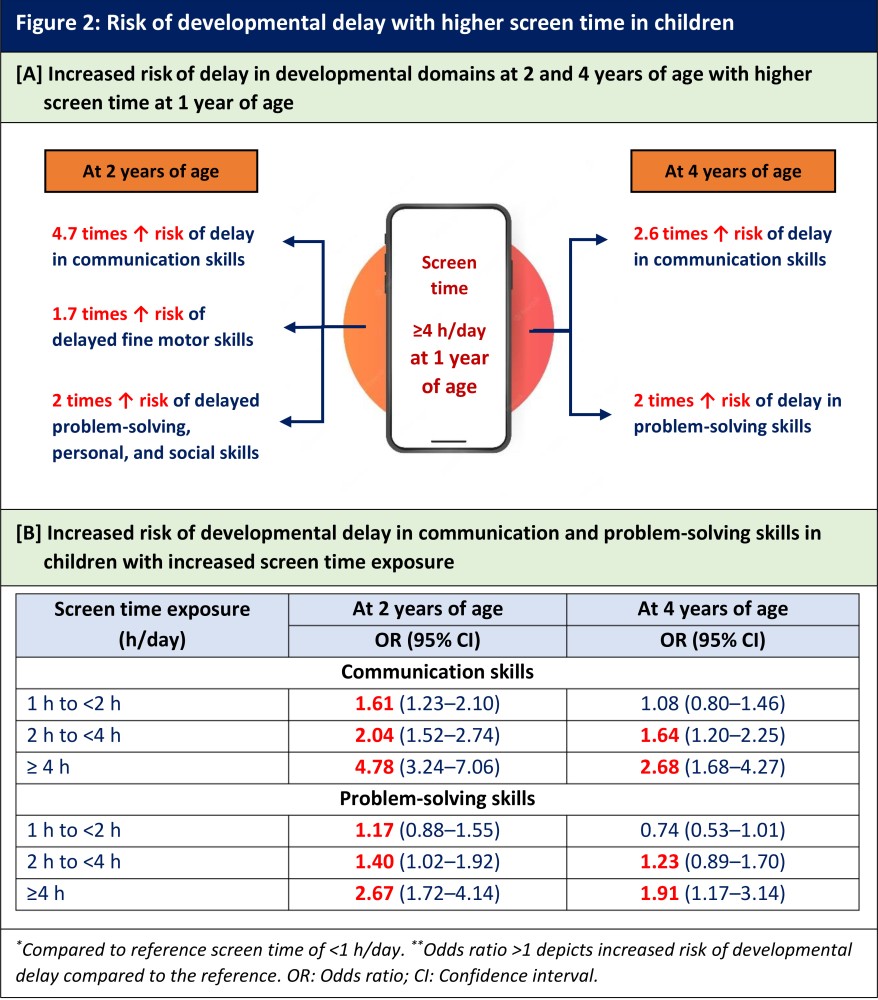
The World Health Organization and the American Academy of Pediatrics advise limiting screen time exposure to one hour per day for children aged 2 to 5 years. With rapid advances in the digital technology and easy access to digital devices in the recent years, it is not surprising that these guidelines are not adhered to by the majority of the families. Higher screen time exposure in children and the associated potential harmful effects on developmental outcomes and overall well-being is an alarming concern!
A new study published in JAMA Pediatrics reported that higher screen time exposure (≥4 h/day) at 1 year of age is associated with delays in developmental domains at 2 years of age. The study also confirmed that the association between screen time exposure and delay in critical developmental domains such as communication and problem-solving persisted at 4 years of age.
This long-term prospective cohort study enrolled pregnant women from 50 healthcare centers. Data was collected from 7,097 mother-child pairs at 1, 2, and 4 years to analyze the impact of screen time exposure at 1 year on five developmental domains, viz., communication, gross motor skills, fine motor skills, problem-solving abilities, and personal and social skills at 2 and 4 years of age. Data related to screen time exposure at 1 year of age was collected through parental questionnaire and exposure was stratified into four levels: <1, 1 to <2, 2 to <4, and ≥4 h/day. Developmental delay in children at 2 and 4 years was assessed using the Ages & Stages Questionnaires (third edition). Each domain was scored over the range of 0–60 points, and a fall in the total score of each domain by 2 standard deviations relative to the mean reference score was considered as developmental delay.
The study results are summarized below:
- Proportion of children with different screen time exposure was:
- <1 h/day: 48.5%
- 1 to <2 h/day: 29.5%
- 2 to <4 h/day: 17.9%
- ≥4 h/day: 4.1%
- The proportion of children with delay in developmental skills at 2 and 4 years of age are shown in Figure 1.

- Higher screen time exposure (≥4 h/day) was associated with increased risk of delayed communication, fine motor, problem-solving, and personal and social skills at 2 years of age. Delay in communication and problem-solving domains persisted at 4 years of age (Figure 2A).
- Dose-response association was observed between higher screen time at age 1 year and developmental delays in communication and problem-solving skills at 2 and 4 years of age, i.e., as screen time increased, the risk of delay in communication and problem-solving skills increased (Figure 2B).

Clinical Implications
- Early screening and identification of developmental delays in children with higher screen time exposure can significantly reduce the long-term adverse impact of screen time on developmental delays and improve overall developmental outcomes.
- Presence of significant association between higher screen time exposure and individual domain of developmental delay in this study warrants further investigations on detailed understanding of the impact of overexposure to screen time on individual developmental domains and overall child development.
(Reference: Takahashi I, Obara T, Ishikuro M, Murakami K, Ueno F, Noda A, Onuma T, Shinoda G, Nishimura T, Tsuchiya KJ, Kuriyama S. Screen Time at age 1 year and communication and problem-solving developmental delay at 2 and 4 years. JAMA Pediatr. 2023:e233057. Doi: 10.1001/jamapediatrics.2023.3057)
